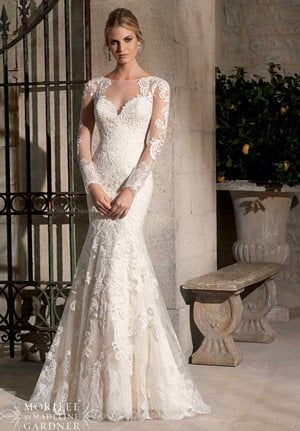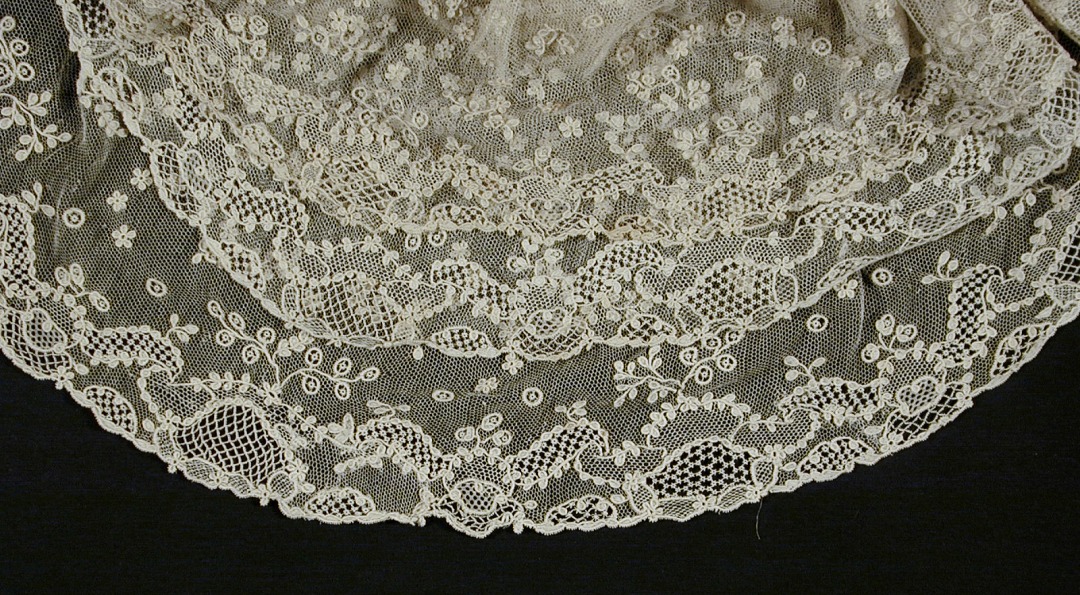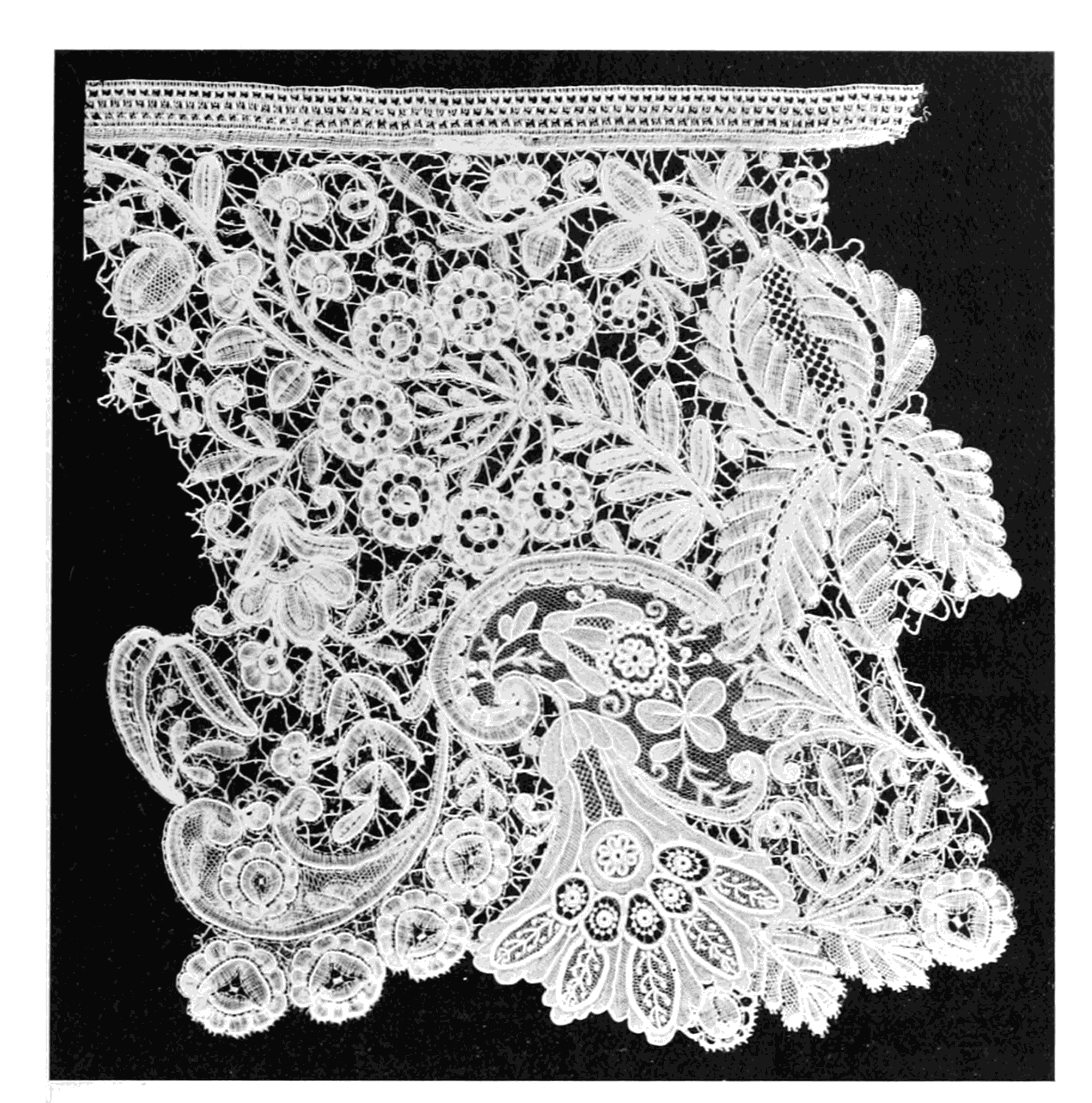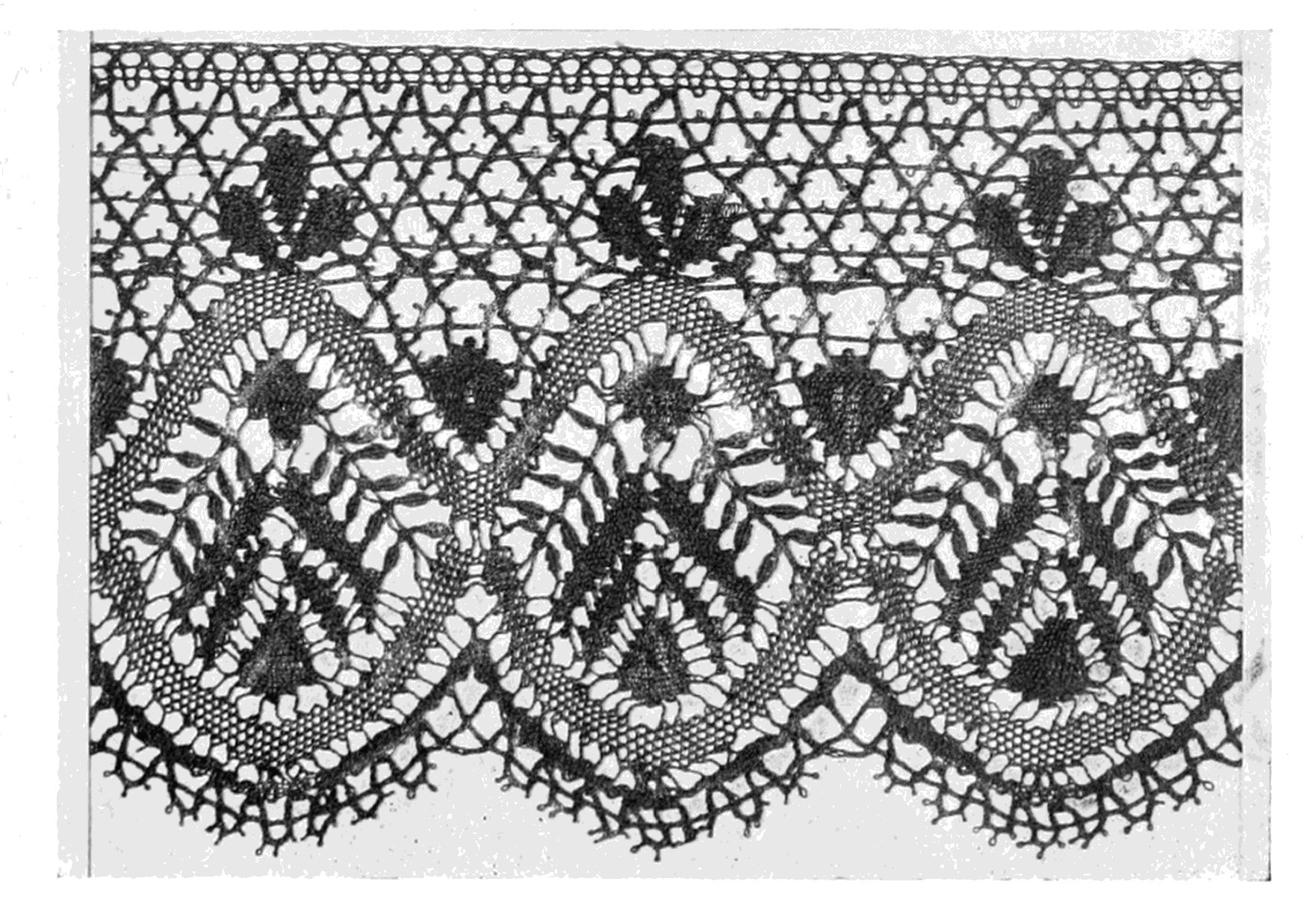
Wedding dress descriptions often mention a type of wedding dress lace used to make the gown. One dress may have chantilly lace while another has guipure lace. Without being able to inspect the gowns up close in person, you might not know the difference between these different wedding dress lace types.
However, it is a fact that there are several different types of wedding dress lace. Also, the effect of one type of lace is entirely different from that of another. The difference is in the fabric, the details in the threadwork done on it and in the embellishments that adorn each of these types of lace. So, have you ever wondered how the types of lace are different? Here are descriptions and some photographs of the different types of lace used in wedding dresses.
Alençon Lace

One of the most common types of lace fabric used in bridal dresses is Alençon lace. This wedding dress lace variety is sometimes referred to as the “Queen of Lace.” Alencon lace is named after the city where it originated and Alençon lace has a long history of adorning women’s dresses. This type of lace was first produced in the 16th century in Alencon, a city in France. It is a needle lace. The designs on Alençon lace are outlined with a fine cording. This lace type is often embellished with small crystals, seed pearls, or sequins.
The Alencon lace has survived the competition from machine-made lace, due to its finesse and unique qualities. When cheaper machine-made lace started growing in popularity, production of alencon lace went into a steady decline. Nevertheless, the technique was preserved and it continues to be a bridal favorite to this day.
Brussels Lace

Of the different types of lace for wedding dresses, Brussels lace is very old-fashioned. This wedding dress lace type was first produced in the fifteenth century in the city of Brussels. This city in Belgium is very famous for its laces. Originally, the term Brussels lace was employed for any type of lace that originated in Brussels. However, this has changed over time. It now refers specifically to a type of bobbin lace.
Brussels lace is extremely delicate. Tradition has it that this type of wedding dress lace was woven in dark rooms for fear that the light would cause the threads to become brittle. Brussels lace is occasionally used for wedding dress details. However, this delicate lace is not as common as other lace varieties.
What sets Brussels lace apart from other types of wedding dress laces is its unique design. Here, the entire unit is made of parts and assembled together. So, the floral details are created separately and woven together to form a single unit. The design is also rather unusual and attractive. In the background, there is no defining cordonnet as is seen in other types of lace. Instead, there are open stitches that border the pattern.
Chantilly Lace
Chantilly lace is one of the most common laces used on wedding dresses. The lace has a fine, plain netting background. Chantilly lace often is used for wedding dress sleeves and overlays. It is a type of handmade lace and includes delicate details that make it unusually charming.
Chantilly lace has a well-defined and obvious outlined pattern. Originally, this lace was made of silk. The modern versions are also done in linen. One of the most striking features of Chantilly lace is the light and shadow effect that is unique to this lace. There are usually abundant floral details and motifs that adorn the lace. Chantilly lace was the choice of royalty in ancient days when it was made in Chantilly. The practice continues to this day and is a staple in the bridal scene.
Duchesse Lace

Duchesse lace is a variety of Brussels lace. This lace has more open space than many other types of bridal lace. This lace acquires its name from its patronage by Marie Henriette, the Duchess of Brabant. Like Brussels lace, Duchesse lace also has large and exquisite floral motiffs. However, there is a marked difference between the two. In Duchesse lace, the floral motiffs are joined to each other by bars instead of mesh patterns. The lace motiffs are raised from the base layer, and it mainly features large sprays of floral designs.
Guipure Lace

The characteristic difference between guipure lace and other types of wedding dress lace is the lack of netting. Most types of wedding dress lace are formed on a netting, the guipure has an open design. This type of lace also is called Venise lace, not to be confused with the spelling of the city of Venice. Guipure lace is heavier than most types of lace. It is a favorite fabric for winter wedding gowns. This lace has a raised texture. It can create a very bold look if used over the majority of the dress.
Guipure lace is similar to Duchesse lace in that it has its different motifs connected to each other by bars or plaits instead of mesh-type details. In the original style of this wedding dress lace, the motifs would contain thicker borders that outlined each element of the pattern. However, this edging of the motifs has been eliminated in modern versions. The lace is very common in wedding gowns.
Schiffli Lace
A lightweight, machine-made lace used as an overlay or edging. Sometimes, this term is used to describe chemical lace. The chemical lace has no netting background because the netting is dissolved with a chemical treatment after the lace design has been embroidered.
There are certain features of Schiffli lace that make it easily recognizable. It is created on a machine or loom with an overlapping embroidery field. The details are created by the interlocking of fabric threads. As a result, it yields units that can stand alone without the aid of meshing or connections. Schiffli lace is used as overlays in bridal gowns. It can also be used to trim sleeves and hemlines, or in the bodice of the dress to create a textural difference.
Many people include eyelet as a type of wedding dress lace. Eyelet is a cotton fabric with embroidered cutouts. It’s not a traditional lace since it’s made on the cotton fabric rather than a netting. Despite not being a true lace, the eyelet is a popular trim with scalloped edging for vintage appeal. The eyelet lace, unlike traditional forms of lace, is sturdy with its definite fabric stretch. The defining of details along the holes adds a quality to the delicate fiber beneath it. It also acquires a boho look, which appeals to chic modern brides who prefer an unconventional bridal look.
Choosing the right wedding dress lace
Where wedding dress lace selection is concerned, there is no right or wrong choice. If you look at the different type of lace wedding dresses, you will find that they all have a characteristic charm that is classic, elegant and definitely bridal.
However, the right choice of wedding dress lace can make your wedding shopping easier if you prefer a certain look. This is because certain laces are better suited for an antique vintage feel, while others are more edgy and modern.
The type of wedding dress lace you wear also affects the overall effect of a dress, and how easy it is to maintain. Soft, flexible and lightweight laces require better care. They are more prone to stretching and tears, and you should be extra careful if this type of lace appears in the hemline of your dress. On the other hand, sturdier forms of lace like the eyelet are less prone to accidents and tearing.
Another factor to consider is the color and the embellishments on the wedding dress lace that influence its look. Off-white lace colors with more texture tend to create an antique or vintage look. Meanwhile, crisp white lace with clear-cut details and fine edging are better suited for modern looks.
Factors to remember when choosing a lace wedding gown
I cannot think of any bridal boutique that will have wedding dresses without lace. Lace is indeed an integral part of the wedding scenery. Although it may not suit everyone’s taste, there are still brides who wouldn’t consider anything but a lace wedding dress for their special day.
If you decide to make your selection from lace wedding dresses, you will have to lavish extra care on the dress. Since wedding dress lace is delicate, it requires special care. Lace is also susceptible to fraying and tearing. Avoid such risks by ensuring the following:
Go for quality over quantity
Handmade wedding dress lace has an exotic quality that cannot be compared to the machine-made version. So, a dress that has just a small quantity of handmade lace will definitely be better than one that is entirely made from the cheap machine-made stuff. Always go with the classics in excellent quality fabric to look elegant and stylish.
Always get the dress altered by an expert
A lace dress should be handled with care at all times. If your dress calls for any alterations, trust only the experts for the job. Repairs on a lace gown have to be done carefully. It is easy to damage the look of the wedding dress lace if it is done improperly. So, ensure you trust a talented seamstress to the job. Also, ensure you pick the dress in the right size, so there will be excess lace to work with when it has to be taken in.
Be prepared to pay more
Every wedding dress, even after alterations should look flawless. And it isn’t easy to get that effect when you have a lace dress. If the areas that are covered in wedding dress lace require alterations, your seamstress will have to put in more effort. This can mean that the alterations may cost extra. So, be prepared for this when you purchase a dress. Altering a lace dress is often a time-consuming task. Keep this mind and set aside enough time when doing your shopping, so this doesn’t turn out to be an issue later.
Place it safely in a secluded space
Wedding dress lace is very delicate and easily prone to tears. It can quickly tear and be damaged if it catches on to anything. So, it is absolutely essential to store it in a safe spot that is away from the traffic zones in your home.
Lay it out flat
A lace wedding dress is always best stored flat. This allows the lace to hold its shape and not result in accidental tears or fraying. Place your wedding dress flat on a shelf in your closet. Else, store it inside a box that you specially buy for the purpose and place it in a safe place.
Consider your veil and jewelry when choosing the lace for your dress
The other part of your bridal outfit that will contain lace is your veil. It is important to match your veil to the lace in your dress for a cohesive effect. So, choose your veil by wearing it with your dress to confirm they go together well.
Irrespective of whether it is guipure, chantilly, alencon or schiffi, lace is a bridal staple that stands out as one of the unique embellishments for wedding dresses. Hence, it is no wonder that lace wedding gowns have stood the test of time. While it continues to evolve to suit the taste of the modern bride, one thing is sure. Lace is here to stay.
We have a stunning variety of lace wedding dresses in our dress collections at Best for Bride. Check out our bridal dress gallery to shortlist your favourites, or for inspiration on planning your wedding day look. For more information about wedding dresses and embellishments, please browse the Best for Bride blog. There you will find detailed descriptions of wedding dress elements including the bustle, veils, and different lengths of trains.



















I sort of like lace, but I am being talked out of it because it is just not modern enough. Is that true?
I have always been a fan of lace. There are so many different styles and you can really customize it if you want.
Lace is not for me. I do like the designs and things like that, but I never really liked how it looked on me.